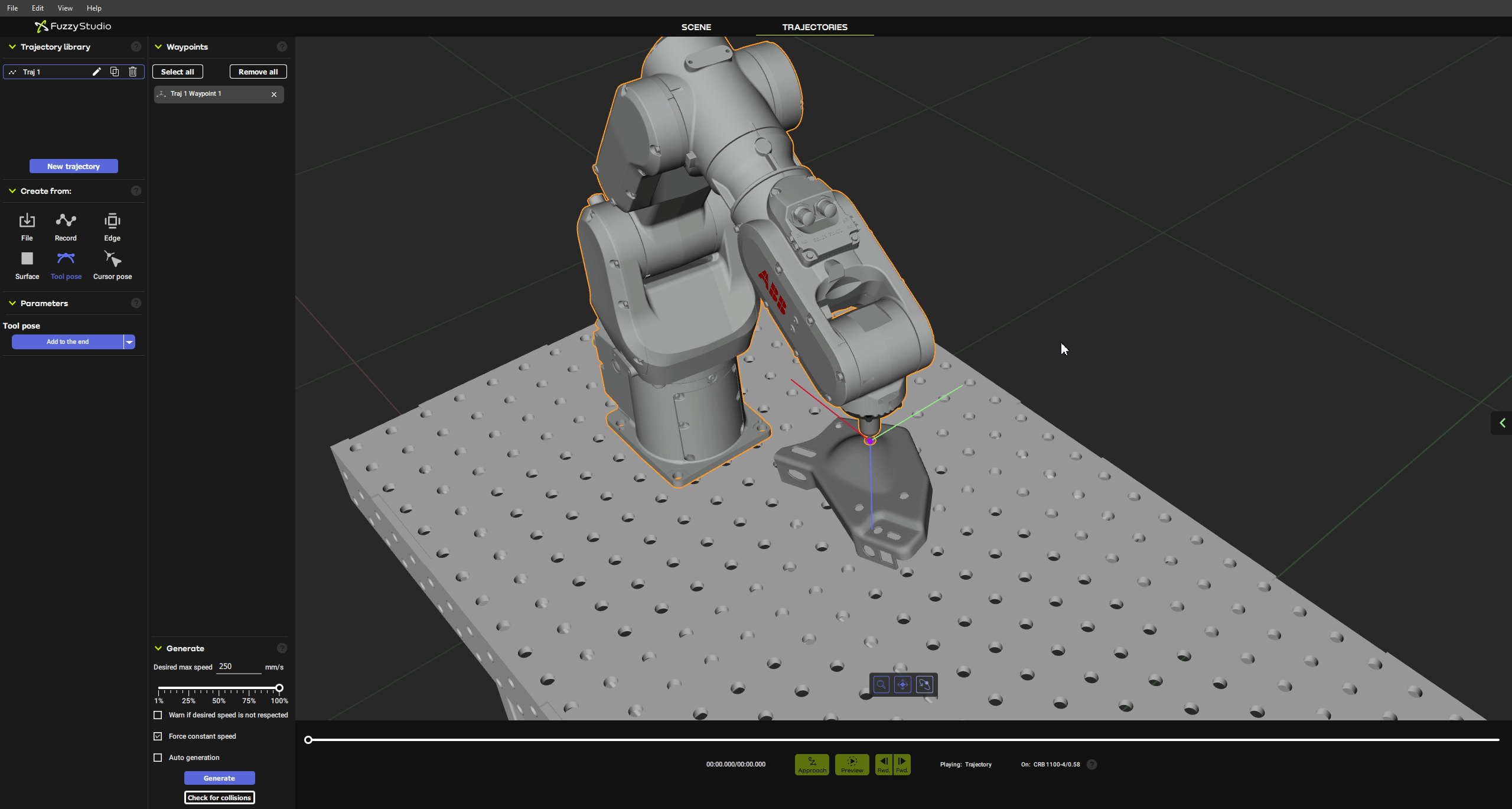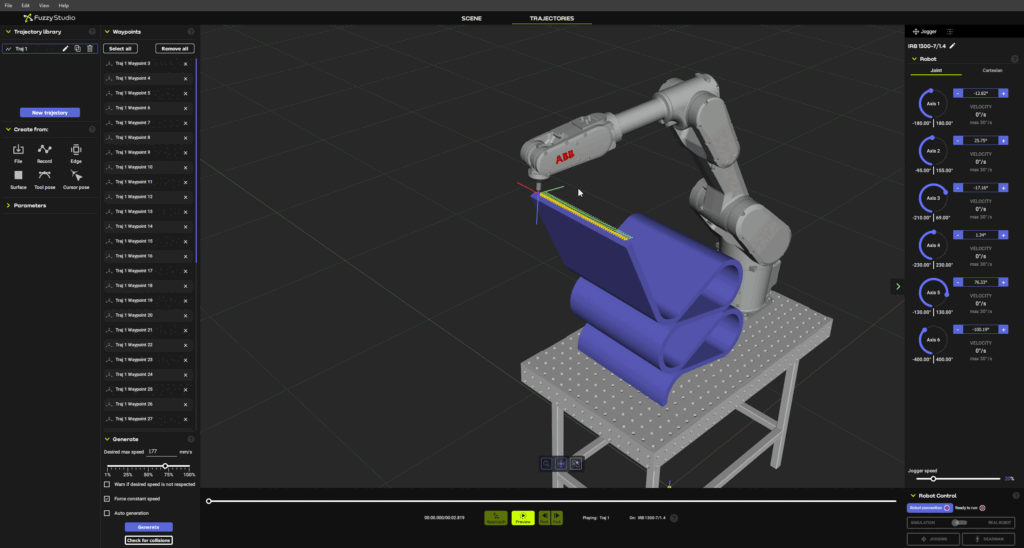This is a term that you have certainly already come across in your research, if you are interested in the subject of industrial robotics (which we can guess, if you are reading these lines).

Motion planning is the process of determining a set of feasible and collision-free trajectories that a robot can follow to complete a given task. Simply put, it is the process of planning how a robot will move to achieve a specific goal. It is an essential aspect of industrial robotics, where robots are used to perform repetitive tasks in manufacturing, assembly, and other production processes.
In this blog post, we’ll look at what motion planning is, how it works, and how it’s used in industrial robotics. Motion planning will no longer hold any secrets for you – it’s gonna be your time to shine!
What is motion planning?
Motion planning is a complex problem that involves many variables, including the robot’s kinematics, dynamics, environment, and task constraints. The goal of motion planning is to determine a sequence of robot configurations, called a trajectory, that can move the robot from its initial to its final position while avoiding collisions with obstacles in the environment.

Motion planning is often used in the context of path planning, where the goal is to find a continuous path that connects the start and end points of the robot’s motion. The path is then discretized into a sequence of robot configurations that are executed in real time to move the robot.

How does motion planning work?
The motion planning problem is typically solved using algorithms that search the robot’s configuration space, which is the set of all possible positions and orientations that the robot can reach. The configuration space is often high dimensional, making the search for a feasible trajectory a challenging problem.

A common approach to motion planning is to use sampling-based algorithms. These algorithms randomly sample the configuration space and check for collisions between the robot and obstacles in the environment. The algorithm then connects the samples to form a path, which is checked for collisions and feasibility. If the path is feasible, it is executed by the robot.
Another approach is to use optimization-based methods that formulate the motion planning problem as an optimization problem. The optimization problem seeks to minimize a cost function that captures the robot’s task constraints, such as minimizing the time or energy required to complete the task. The optimization problem is subject to constraints that ensure that the robot’s trajectory is feasible and collision-free.

How is motion control used in industrial robotics?
Motion scheduling is used in industrial robotics to automate these tasks, improve their efficiency, and reduce errors. In manufacturing, motion planning is used to program robots to perform tasks such as pick-and-place, assembly, polishing… Motion planning algorithms are used to determine the robot’s trajectory and optimize its motion to minimize cycle time and maximize throughput. Motion planning can also be used to verify the feasibility of a process and identify potential problems before the robot is used.

In addition to manufacturing and assembly, motion planning is used in many other industrial robotics applications, such as welding, painting and inspection. In welding, for example, motion planning algorithms are used to generate trajectories that ensure the robot follows the weld path accurately while avoiding collisions with the workpiece.
Realize your motion planning with Fuzzy Studio
Motion control is a critical component of industrial robotics. It enables robots to perform complex tasks with high accuracy and efficiency, while minimizing errors and reducing the risk of collisions. The use of motion planning algorithms in industrial robotics has revolutionized the way we manufacture and produce goods and has opened up new opportunities for automation in a wide range of industries.

Fuzzy Logic, thanks to Fuzzy Studio, offers complex trajectory generators that are extremely easy to use, allowing anyone to create a robotic application with little or no robotics knowledge. These generators allow you to create an optimized trajectory by passing through the desired points, to follow a shape edge, or to perform a surfacing of complex objects, opening the door to applications that are usually not very robotic due to the many different dimensions and small series.

Want to know more about us and what you’d be able to achieve with Fuzzy Studio ? Don’t wait and check our tutorials, made especially for you.
